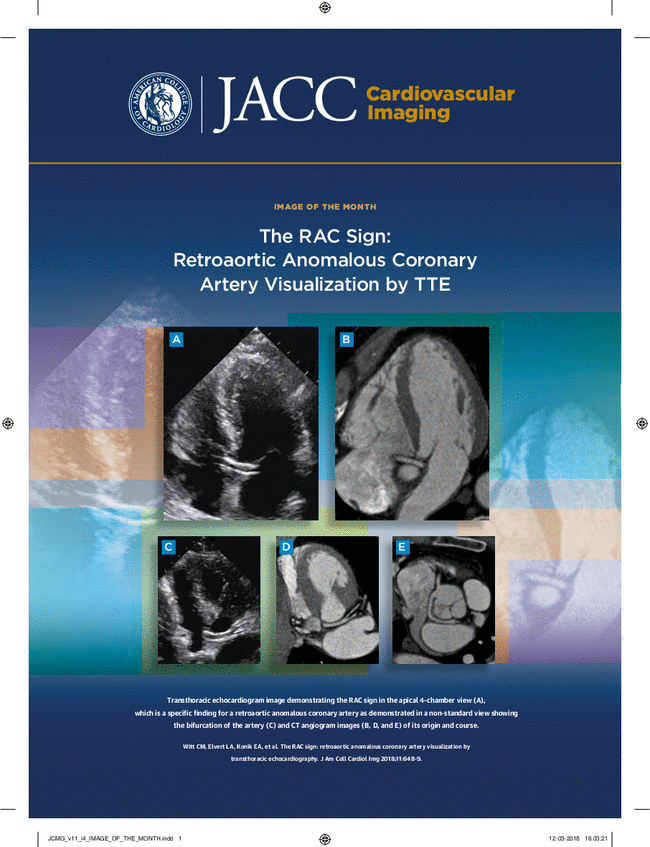加速药物翻译
IF 15.2
1区 医学
Q1 CARDIAC & CARDIOVASCULAR SYSTEMS
引用次数: 0
摘要
目前对冠状动脉疾病(CAD)治疗靶点和药物评价的新途径的需求尚未得到满足。使用主要心血管不良事件作为主要结局有利于严格性,但与大样本量要求、长研究持续时间以及相关成本和风险相关的挑战仍然是关键利益相关者的主要阻碍因素。到目前为止,还缺乏一种反映动脉粥样硬化本身的心血管事件的可靠的、经过良好验证的替代生物标志物。随着新的靶向炎症和低密度脂蛋白下游因子以及其他公认因子的候选治疗药物不断出现,这一点尤为重要。冠状动脉计算机断层血管造影(CTA)已经成为一种理想的成像、表征和量化特定斑块成分的方式,在CAD药物开发管道中具有更正式的作用。本文综述了形态学(高危斑块)和定量(特异性斑块成分)指标,考虑了它们与动脉粥样硬化其他影像学指标的病理生理学相关性、每种成分与主要不良心血管事件的关联证据以及它们对有效药物治疗的反应性。鉴于冠状动脉CTA采集和分析技术的快速发展,迫切需要关键利益相关者之间的协调和合作,包括成像硬件和软件公司、制药公司、临床医生、患者、监管机构和支付方。如果标准化的冠状动脉CTA终点被验证为临床药物试验的替代品,这一领域的进展以及随后可能为更广泛的心血管社区带来的机会,可以加速创新并提高CAD药物开发的效率。本文章由计算机程序翻译,如有差异,请以英文原文为准。
Accelerating Drug Translation
There is an unmet need for new pathways to evaluate therapeutic targets and drugs for coronary artery disease (CAD). The use of major adverse cardiovascular events as a primary outcome is advantageous for rigor, but challenges related to large sample size requirements, long study durations, and associated costs and risks remain major disincentives for key stakeholders. Until now, a robust, well-validated surrogate biomarker for cardiovascular events that reflects atherosclerosis itself has been lacking. This is particularly important as new therapeutic candidates targeting inflammation and factors downstream of low-density lipoprotein and other well-recognized factors continue to emerge. Coronary computed tomography angiography (CTA) has emerged as an ideal modality to image, characterize, and quantify specific plaque components, with potential for a more formal role in the CAD drug development pipeline. This review examines both morphological (high-risk plaque) and quantitative (specific plaque components) measures, considering their pathophysiological correlation with other imaging measures of atherosclerosis, evidence for the association of each component with major adverse cardiovascular events, and their responsiveness to effective drug treatments. Given the rapid advancement in coronary CTA acquisition and analysis technology, there is an urgent need for coordination and collaboration among key stakeholders, including imaging hardware and software companies, pharmaceutical companies, as well as clinicians, patients, regulators, and payers. Progress in this area, and the opportunities that may follow for the broader cardiovascular community if standardized coronary CTA endpoints are validated as surrogates for clinical drug trials, could accelerate innovation and enhance efficiency in CAD drug development.
求助全文
通过发布文献求助,成功后即可免费获取论文全文。
去求助
来源期刊

JACC. Cardiovascular imaging
CARDIAC & CARDIOVASCULAR SYSTEMS-RADIOLOGY, NUCLEAR MEDICINE & MEDICAL IMAGING
CiteScore
24.90
自引率
5.70%
发文量
330
审稿时长
4-8 weeks
期刊介绍:
JACC: Cardiovascular Imaging, part of the prestigious Journal of the American College of Cardiology (JACC) family, offers readers a comprehensive perspective on all aspects of cardiovascular imaging. This specialist journal covers original clinical research on both non-invasive and invasive imaging techniques, including echocardiography, CT, CMR, nuclear, optical imaging, and cine-angiography.
JACC. Cardiovascular imaging highlights advances in basic science and molecular imaging that are expected to significantly impact clinical practice in the next decade. This influence encompasses improvements in diagnostic performance, enhanced understanding of the pathogenetic basis of diseases, and advancements in therapy.
In addition to cutting-edge research,the content of JACC: Cardiovascular Imaging emphasizes practical aspects for the practicing cardiologist, including advocacy and practice management.The journal also features state-of-the-art reviews, ensuring a well-rounded and insightful resource for professionals in the field of cardiovascular imaging.
 求助内容:
求助内容: 应助结果提醒方式:
应助结果提醒方式:


